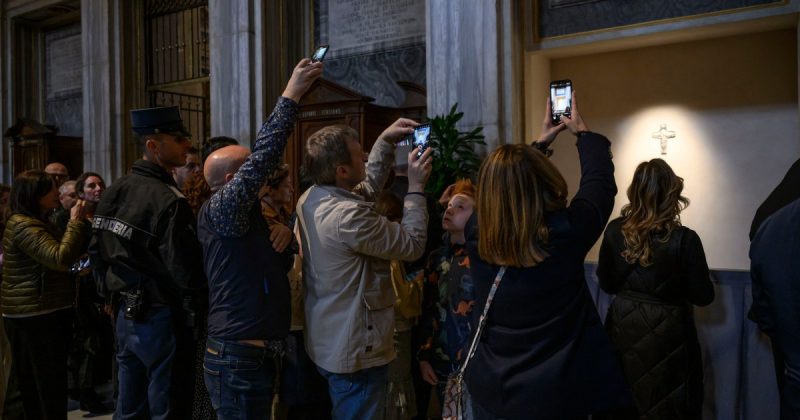
Thousands of mourners lined up outside the Basilica of St. Mary Major in Rome on Sunday, a day after Pope Francis’s funeral, to pay their respects at his simple tomb. The white marble grave, marked only with his Latin name “Franciscus,” reflects the late pontiff’s lifelong commitment to humility. A single white rose rested on the stone slab, beneath a replica of his pectoral cross, illuminated by a soft spotlight.
The location itself holds deep significance. The basilica’s chapel, where Francis often prayed before the icon of the Virgin Mary, was chosen as his final resting place, a testament to his devotion. This choice, according to the basilica’s archbishop, perfectly embodies the late Pope’s simple and essential life, a life marked by humility and service to others.
The scene stood in stark contrast to the grandeur of Saturday’s public funeral at the Vatican, attended by world leaders and hundreds of thousands of mourners. Following the funeral, Pope Francis’s casket was transported to St. Mary Major, where, fulfilling his final wishes, he was met by Rome’s marginalized communities—the poor, prisoners, migrants, homeless, and transgender individuals. A private burial ceremony, attended only by senior cardinals and family members, followed, concluding a life of profound impact.
Francis’ burial outside the Vatican walls—the first in over a century— further underscores his desire for simplicity. His final resting place serves as a powerful reminder of his legacy and his dedication to those often overlooked. The nine-day period of mourning and celebration will continue as the Vatican prepares for the conclave, the process to elect a new Pope, which must begin within 15 to 20 days of the Pope’s passing. The details of the upcoming conclave remain undisclosed.
The long lines of mourners speak volumes about the enduring impact of Pope Francis’s papacy. His legacy of humility and compassion continues to resonate deeply with people worldwide, even in the quiet simplicity of his final resting place.










